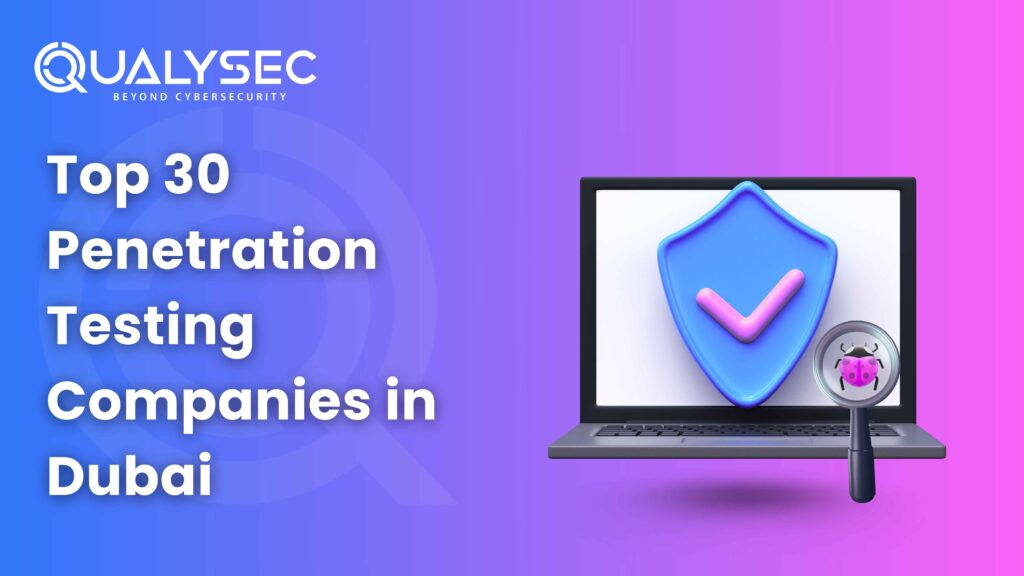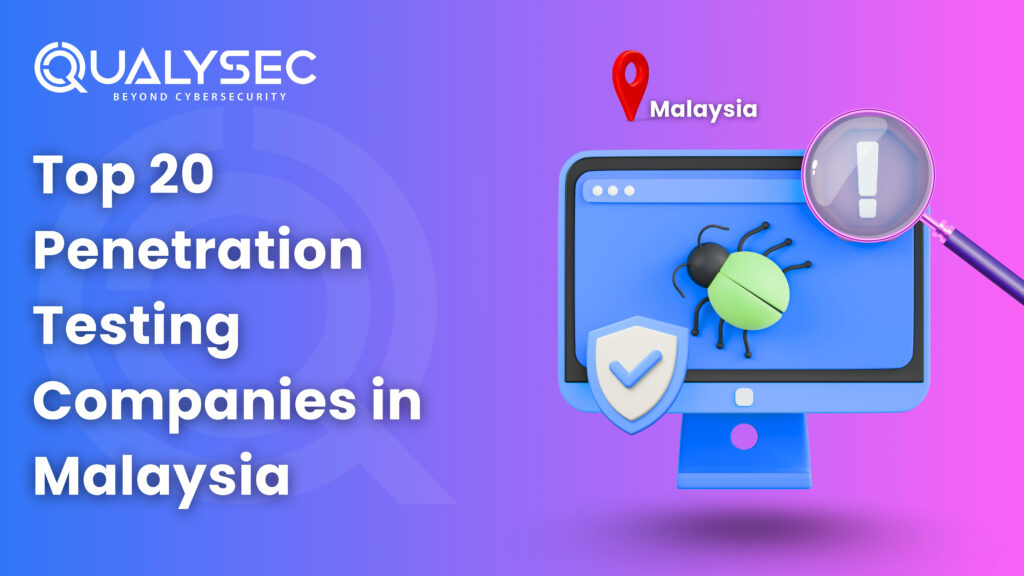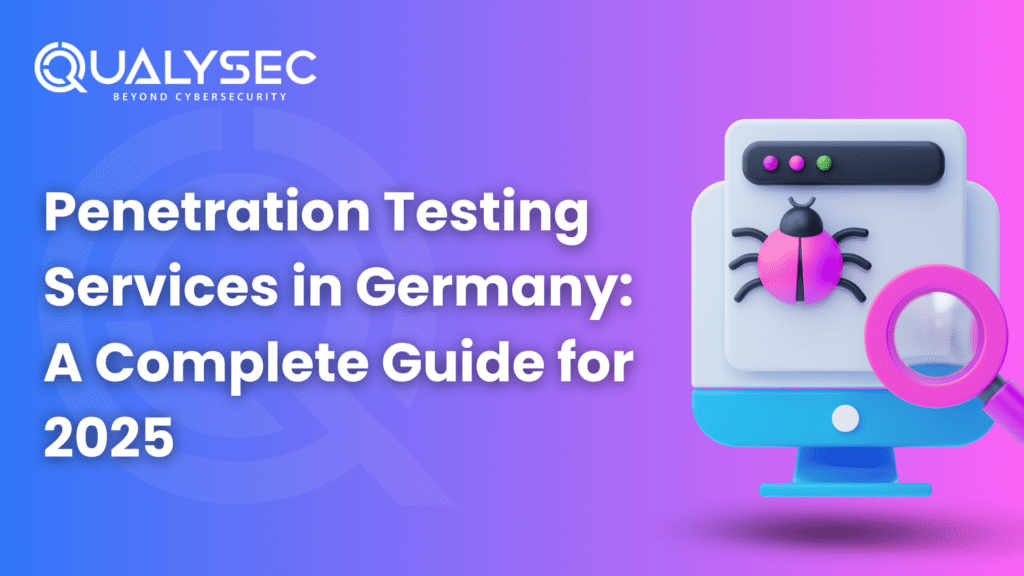Top 30 Pen testing Companies in Dubai 2025
By 2025, the demand for pen testing companies in Dubai is expected to be so high due to a year-on-year 38 percent increase in cyberattacks worldwide and a 30 percent year-on-year growth in penetration tester demand in Dubai alone. According to the latest market research reports, by 2029, the cybersecurity market in the UAE will exceed 1.07 billion US dollars, which indicates the prioritization of the digitalization process and strong cybersecurity services in the region. Digital business in Dubai has skyrocketed in the last year by a rate of 24 percent, and this needs sophisticated levels of security. Remarkably, the majority of successful corporate breaches worldwide in the year 2025 are owed to weak web applications, with 73 percent edging closer to the importance of penetration testing Dubai services for applications. Regulatory compliance is also a contributing factor, with businesses within the UAE being mandated to show that they are in compliance with standards like PCI DSS, ISO 27001, and local regulations on data protection. That is why, now penetration testing company in Dubai are not the type of business that is only necessary – they are also business essentials. Hence, make sure to choose the right cybersecurity company like Qualysec Technologies and contact them today! Looking for the best pen testing companies in Dubai? Explore our expert-curated list and get secured today! Best 30 Pentesting Companies In Dubai 1. Qualysec Technologies About – Location – India (Global operations, with servicing of Dubai and UAE) Services – Additional Information Download our Sample Penetration Testing Report to understand how vulnerabilities are reported and mitigated. Latest Penetration Testing Report Download 2. DarkMatter About – DarkMatter is a cybersecurity company based in Abu Dhabi that collaborates to engage in technologically advanced threat intelligence and national-level cybersecurity services. They offer important services to both the government and big companies with a focus on the protection of digital assets. Location– Abu Dhabi, UAE Services – Digital forensics, incident response, managed security services Among penetration testing companies in UAE. 3. KPMG UAE About – KPMG UAE is an international organization of consultants with a strong cybersecurity service providers located in Dubai. They use the local knowledge together with international expertise in order to provide all-inclusive and reliable cybersecurity services to various clients. Location – Dubai, UAE Services – The services include Penetration testing, comprehensive risk examination, compliance advisory, and custom application penetration testing in Dubai. 4. Wattlecorp About – Wattlecorp is a local player with a professional approach and localized VAPT (Vulnerability Assessment and Penetration Testing) services to serve businesses in Dubai. They specialize in providing accurate and efficient security measures. Location – Dubai, UAE Services – End-to-end pen test services dubai of different areas such as Web, mobile, network, API, and cloud infrastructures. 5. ScienceSoft About – ScienceSoft topped the series of VAPT with impeccable attention to such industry-standard frameworks as NIST, OWASP. This gives a strong, worldwide accepted security testing. Location – Dubai, UAE (US-based Global HQ) Services – They offer in-depth application penetration testing, strengthening network security, and undertaking a critical cloud security analysis to find and eliminate weaknesses successfully. 6. Clouds Dubai About – Clouds Dubai has acquired a specific expertise in cloud and IoT penetration testing companies in UAE Location – Dubai, UAE Services – Their VAPT services cover server/Workstation, cloud, IoT, firewall, and wireless networks altogether, adopting a comprehensive approach to cyber safety and supporting the needs of the most modern infrastructures. 7. ValueMentor About – ValueMentor differentiates itself by having a high emphasis on compliance-based security and a strict risk evaluation practice that enables organizations to achieve what is required by regulatory bodies and optimize their level of security. Location – Dubai, UAE Services – The fundamental services that they offer involve comprehensive penetration testing, risk management strategy, and comprehensive compliance testing of organisations, and offer a tripartite organization security and governance platform. 8. EC-Council Global Services (EGS) About – EC-Council Global Services is a CREST-approved and PCI ASV-approved company. They offer an efficient PTaaS (Penetration Testing as a Service) platform that simplifies ongoing security testing. Location – Dubai, UAE Services – They also support specialized application penetration testing Dubai, as well as cloud security, network security, and blockchain security services, providing an adequate number of skill sets to cover a wide range of digital asset security risks. 9. DTS Solution About – DTS Solution is a cybersecurity consulting firm. It has a reputation for developing unique strategies that strictly respond to the risk management and compliance requirements of clients, offering one-off solutions to sophisticated security environments. Location – Dubai, UAE Services – Their services incorporate the vulnerable weakness analysis and penetration testing, supported by skilled security consultation, to assist organizations in developing sturdy security systems and procedures. 10. Penetration Testing Middle East About – Penetration Testing Middle East is located in Dubai Silicon Oasis and provides full, accredited penetration testing services, which gives regional businesses quality penetration testing services. It is one of the best pen testing companies Dubai. Location – Dubai, UAE Services – They offer the most needed task services such as web, mobile, and internal or external infrastructure penetration tests, and, most importantly, remediation assistance in handling security loopholes found. Compare top penetration testing services and find the right fit for your security needs.. 11. Syscom Distributions LLC About – Syscom Distributions LLC delivers IT infrastructural support and cybersecurity solutions that are unique to the education, healthcare, and retail sectors. They also provide niche specialisation to address the special requirements in the security of these industries. Location – Dubai, United Arab Emirates Services – They provide fully equipped services including penetration checks, quality IT consultancy, and trusted managed services, restoring an end-to-end coverage of their clients’ digital sphere. 12. Nuox Technologies About – They lay more stress on thorough examination and tactical thinking to strengthen the digital resources of their clients. Location – Dubai, UAE Services – Their main services include comprehensive penetrating tests, security assessment, and full security compliance with the industry regulations that ensure comprehensive






